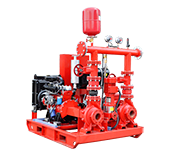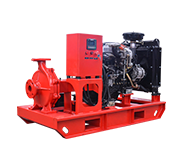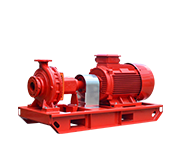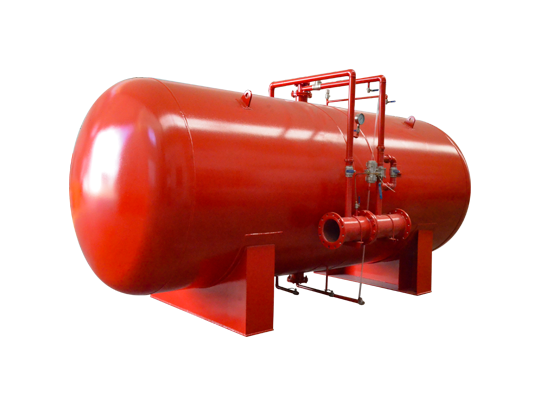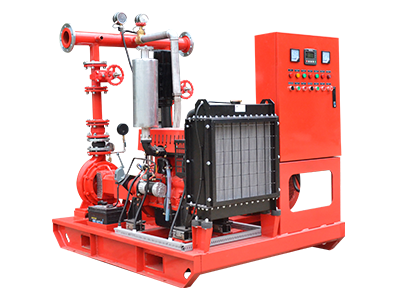- Fire Pump System
-
- UL-Listed Fire Pump SetEDJ End Suction Fire Pump SetEDJ Fire Pump SetEJ Small Flow Fire Pump SetFire Pump PackagesContainerized fire pump setDiesel Fire Pump SetED Small fire pump setElectric Jockey Fire Pump SetFire Pump Set with Jockey PumpFire Pump SystemSplit Case Fire Pump SetMutistage EDJ Fire Pump SetDiesel Fire Pump Set with Jockey PumpFire Fighting Pump SystemElectric Diesel Jockey Fire Pump SetFire Fighting Pump Set with Jockey PumpSmall Capacity Electric Fire Pump SetDJ Fire Pump Set with Jockey PumpEJ Fire Pump SetED Fire Pump Set (Electric+Diesel pump)Diesel Engine Fire Pump SetDiesel Fire Jockey PumpSmall Fire Pump SetEDJ Fire Pump SystemFire Water Pump SetFire Pump AssemblyDJ Small Flow Fire Pump SetCummins Engine Fire Pump Set
- Mobile Pump Unit
-
- Split Case Series Mobile Pump TruckSelf Priming Series Mobile Pump TruckCentrifugal diesel driven dewatering pumps open frame trailerFlow-mixing Mobile Pump TruckFlow-mixing Mobile Pump TruckManure Pump TruckP12 modle mobile Pump truckP10 Modle Mobile Pump Truck1000m³Self Priming Series Mobile Pump TruckLarge Flow Non-Clogging Mobile Fire Pump TrailerTrailer Mounted Fire PumpFire Emergency Mobile Pump TruckDiesel Engine Emergency Mobile Trailer Pump
- Diesel Fire Pump
-
- UL Listed Diesel End Suction Fire PumpXBC-S Diesel Split Case Fire PumpXBC-IS Diesel End Suction Fire PumpXBC-D Diesel Multistage Fire PumpVertical Turbine Diesel Engine Fire PumpDiesel Engine Single-Stage Centrifugal PumpXBC-IS Diesel End Suction Fire Fighting PumpXBC-S Diesel Engine Split Case Fire PumpDiesel Engine End Suction Fire PumpXBC-IS Diesel End Suction Fire PumpsZWC Diesel Engine Self Priming Pump for IrrigationDiesel Engine End Suction Fire Fighting PumpXBC-S Heat Exchange Diesel End Suction Fire PumpXBC-XA Diesel Engine End Suction Fire PumpXBC-IS Diesel Engine Fire PumpDiesel Engine End Suction Fire PumpXBC-IS Diesel Engine End Suction Fire PumpXBC-ISO Diesel Fire Fighting PumpPortable Fire PumpFire Booster Pump
- Water Pump
-
- Domestic Water SeriesStainless Steel Vertical Multistage PumpStainless Steel Submersible Sewage PumpVertical Multistage PumpAxial Flow PumpDomestic Water Pump SeriesSubmersible Sewage Pump with AgitatotCentrifugal Water PumpsDomestic Water Series With Pressure TankDomestic Water Series With Pressure TankChemical PumpClear Water Pump TruckSubmersible Sewage Pumpoil-pump

Email: zjbetter@119pump.com
Tel:+86 15336708022(Gloria) +86 13306708055 (Ivy) +86 13357006058 (Serena) +86 13357022877 (Wendy) +86 17757009882(Kate)
Fax:0086-570-3010238
-
.jpg)
- Factory-Specific Diesel Fire Pump System – Easy Installation, Low Maintenance, and Fast Response
- 2025.06.04
- BETTER Factory Diesel Fire Pump System delivers fast response and off-grid operation, ideal for high-risk or power-unstable industrial zones. Easy to install and maintain, fully customizable to meet various fire protection needs.
-

- Electric Motors for Fire Pump Systems – Customizable, Affordable, and Performance-Proven
- 2025.06.04
- BETTER electric motors for fire pump systems are customizable, cost-effective, and performance-proven. Designed for global standards, they deliver reliable power and high efficiency for industrial, commercial, and high-rise firefighting solutions.
-
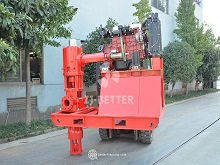
- Ideal for Deep-Well Fire Water Sourcing! BETTER Diesel Vertical Shaft Pump Powers Industrial Fire Protection
- 2025.06.03
- The BETTER Diesel Vertical Shaft Fire Pump is designed for deep-well water sourcing and industrial fire protection. Featuring diesel-driven power, high head, and smart control, it's the ideal choice for firewater supply in petrochemical, power, and industrial sites.
-

- Fully Integrated Design! Electric Fire Pump Unit Safeguards High-Rise Buildings and Large Complexes
- 2025.06.03
- The Better Electric Control Fire Pump Set features a fully integrated system design that combines pump, motor, control cabinet, and pressure maintenance into one unit. Ideal for high-rise buildings and large facilities, it offers smart monitoring, continuous water supply, compact structure, and reliable safety performance for modern firefighting needs.
-

- New Benchmark for Constant Pressure! Vertical Multistage Pressure-Stabilizing Fire Pump Set for High-Rise Buildings
- 2025.05.31
- Vertical multistage pressure-stabilized fire pump delivers constant high-pressure water supply for high-rise buildings with smart control and compact design.
-
.jpg)
- Accurate Pressure Control and Reliable Operation – Electric Fire Pump Package for Rapid Emergency Response
- 2025.05.31
- The Electric Integrated Fire Pump Set features a compact design with built-in pressure regulation, electric drive, and smart control. Ideal for buildings and industrial settings, it delivers efficient, stable, and eco-friendly firefighting water supply solutions. Customizable to meet diverse fire protection needs.
-

- Solving Suction Challenges: Structural Reliability of Vertical Long Shaft Fire Pump Design
- 2025.05.30
- The vertical long shaft pump is engineered for demanding environments requiring high suction lift and deep-well operation. Featuring a robust multistage impeller system, corrosion-resistant construction, and customizable shaft lengths, it ensures stable performance and high efficiency in firefighting systems, municipal water supply, and industrial facilities—making it the optimal solution for long-term, reliable pumping needs.
-

- Optimizing Initial Response: Strategic Role of Horizontal Pressure Tanks in Fire Pump Start-Up
- 2025.05.30
- The horizontal pressure water tank is a vital component in fire pump systems, designed to stabilize initial pressure, improve startup response, and extend pump lifespan. Suitable for a wide range of fire protection applications, it supports custom specifications and complies with international standards, making it ideal for smart and energy-efficient firefighting solutions.
-

- Stable Water Supply Without Limits! Horizontal Multistage Fire Pump Set for Harsh Conditions
- 2025.05.29
- The multistage horizontal fire pump set is designed for complex conditions, offering high pressure, compact structure, stable performance, and energy efficiency. It is ideal for high-rise buildings, industrial sites, and municipal fire protection, ensuring continuous and reliable water supply.
-

- Classic Power, Steady Flow! Blue Electric Horizontal Centrifugal Pump for Efficient Water Supply
- 2025.05.29
- The blue electric horizontal centrifugal pump offers stable performance, compact design, and smart control—ideal for firefighting and efficient water supply systems.
-
.jpg)
- Powerful Performance in Blackouts! Diesel Integrated Fire Pump Unit Secures Emergency Response
- 2025.05.28
- This diesel integrated fire pump unit features powerful performance and smart controls, ideal for emergency fire protection during blackouts. Its compact, modular design enables quick installation, making it perfect for industrial sites, high-rise buildings, hospitals, and airports. Compliant with GB, NFPA, and ISO standards, it delivers reliable and efficient fire safety solutions.
-
.jpg)
- Compact Yet Powerful! High-Integration Electric Fire Pump Unit Enhances Installation Efficiency and Response Time
- 2025.05.28
- ZJ-BETTER’s compact electric fire pump unit offers fast installation, smart control, and reliable performance for modern fire protection systems.
-

- Fast Priming, Instant Start! Electric Self-Priming Fire Pump Ensures Rapid Fire Response
- 2025.05.27
- The electric self-priming fire pump offers fast startup, no manual priming, strong suction, and compact design. Ideal for emergency firefighting and limited-space installations, ZB’s high-efficiency fire pumps ensure reliable performance and easy maintenance for a variety of applications.
-

- Preferred for Deep Wells! Vertical Long Shaft Fire Pump Ensures Stable Water Supply for High-Rise Firefighting
- 2025.05.27
- ZJ-BETTER vertical long shaft fire pump is specially designed for deep wells and underground water sources. It features high head, large flow, compact structure, corrosion resistance, and low noise. Ideal for high-rise buildings, industrial parks, and ports, it ensures reliable firefighting water supply. Multiple start-up modes and international certifications make it export-ready and globally trusted.
-

- Dual-Pump Synergy for Continuous Water Supply! Vertical Multistage Fire Pump Unit Builds Efficient Firefighting Systems
- 2025.05.26
- Twin pump vertical multistage fire pump ensures continuous water supply, high head, energy efficiency, and smart control for modern firefighting systems.
-
.jpg)
- Tackling Wastewater with Ease! Submersible Fire Pump Engineered for Harsh Conditions
- 2025.05.26
- Designed for harsh and complex environments, the submersible fire pump offers outstanding sewage handling, corrosion resistance, and long-lasting performance. Ideal for industrial zones and urban drainage systems, it ensures reliable fire protection and drainage, even in high-moisture, high-contamination conditions. Advanced sealing and high-efficiency motor technology make it a powerful asset for any emergency response system.
-

- Strong Pressure Tolerance, Broad Application! Horizontal Stainless Fire Pump Designed for Challenging Conditions
- 2025.05.23
- ZJ-BETTER stainless steel horizontal fire pump is corrosion-resistant, energy-saving, and ideal for complex firefighting systems in buildings and industry.
-
.jpg)
- Stainless Power! Vertical Multistage Pressure Pump Delivers Continuous Boost for Fire Protection Systems
- 2025.05.23
- Vertical multistage fire pump designed for high-rise and industrial use, featuring energy efficiency, low noise, and intelligent control for modern fire systems.
-
.jpg)
- Small Footprint, Full Functionality! Compact Fire Booster Pump Ideal for Limited-Space Buildings
- 2025.05.22
- Compact and intelligent, this small fire pressure pump set is ideal for space-limited buildings—ensuring stable water supply and fast fire response.
-
.jpg)
- Flexible Configuration, Precise Control! Integrated Electric Pressure Pump Unit Delivers Efficient Water Supply for Firefighting
- 2025.05.22
- The electric integrated pressure boosting pump unit combines pump, control cabinet, and pressure tank into one compact system. Featuring smart control, fast response, energy efficiency, and strong safety performance, it is an ideal solution for modern fire protection water supply systems.
-
.jpg)
- Reliable Under High-Frequency Starts! Fire Jockey Pump Performs Powerfully in Frequent Use
- 2025.05.21
- This high-frequency fire pressure stabilization pump features intelligent control, multi-pump linkage, energy efficiency, and low-noise operation. It is ideal for fire protection in high-rise buildings, hospitals, malls, and other frequent-startup environments. Compliant with international fire standards, it is a critical component in modern fire safety systems.
-
.jpg)
- Built for Extremes! Heavy-Duty Diesel Fire Pump System Adapted to Harsh Environments
- 2025.05.21
- The heavy-duty diesel-driven double suction fire pump system is built for harsh environments, featuring powerful performance, high flow and head, modular integration, and intelligent control. Ideal for industrial, mining, and power plant fire protection.
-
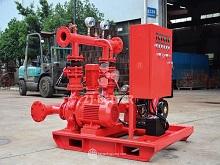
- Fast Response & Continuous Water Supply! Integrated Diesel Fire Pump Enhances Emergency Efficiency
- 2025.05.20
- The Integrated Diesel Engine Fire Pump Set offers rapid response, continuous water supply, and smart control, ideal for high-rise buildings, factories, warehouses, docks, and more. Easy to operate, customizable, and cost-effective, it meets diverse firefighting needs.
-
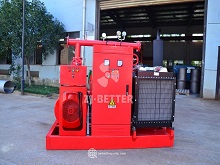
- Meeting High Flow Demands! Diesel Engine Fire Pumps Offer Perfect Firefighting Solutions
- 2025.05.20
- This diesel engine fire pump is engineered for high flow and high pressure firefighting applications, featuring powerful performance and independent power supply. Ideal for industrial, high-rise, and remote environments. Certified to international standards, it’s a reliable choice for effective fire protection.

